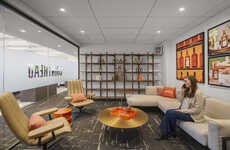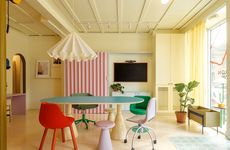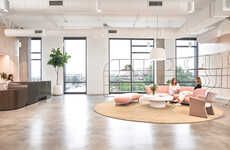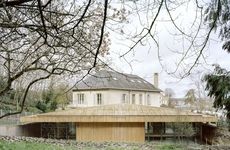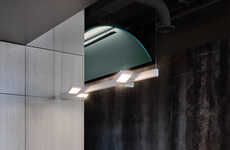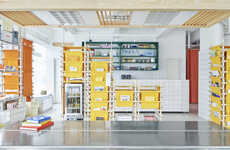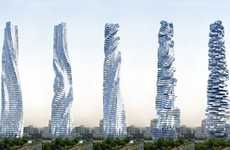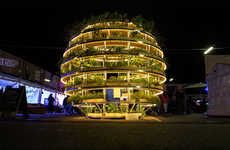
The New Sogeprom Headquarters Features Open Space and Glass
Joey Haar — December 27, 2017 — Art & Design
References: archdaily
When looking at a comparison of between the former Sogeprom Headquarters and the current iteration, it's clear that the new, modern building is a drastic improvement. While the old building was indebted to the design tendencies of the eighties to a fault, the new building accepts what might otherwise be seen as limitations and turns those into strengths.
As Ateliers 2/3/4, the architects behind the new Sogeprom headquarters, so succinctly put it, "the [old] building wanted to be a tower, but it's not." The surrounding buildings in the downtown core of Courbevoie, France, are tall office towers, but due to limitations on the property, the Sogeprom Headquarters could not be built up high. Instead, the architects opted for wide open gaps in the building since the structural integrity wasn't required.
As Ateliers 2/3/4, the architects behind the new Sogeprom headquarters, so succinctly put it, "the [old] building wanted to be a tower, but it's not." The surrounding buildings in the downtown core of Courbevoie, France, are tall office towers, but due to limitations on the property, the Sogeprom Headquarters could not be built up high. Instead, the architects opted for wide open gaps in the building since the structural integrity wasn't required.
Trend Themes
1. Open Space Design - The trend towards open space design in office buildings allows for flexibility and collaborative work environments.
2. Glass Facades - The use of glass facades in modern architecture provides a sleek and transparent aesthetic, blurring the boundaries between interior and exterior spaces.
3. Adaptive Design - The adoption of adaptive design principles in building construction allows for innovative solutions to overcome spatial limitations and create unique structures.
Industry Implications
1. Architecture - Architects can capitalize on the trend of open space design and glass facades to create efficient and visually appealing buildings for various industries.
2. Real Estate - Real estate developers can explore adaptive design techniques to maximize the potential of properties with spatial limitations, offering unique and desirable spaces to tenants and buyers.
3. Interior Design - Interior designers can leverage the trend of open space design to create functional and stylish office spaces that promote collaboration and productivity.
2
Score
Popularity
Activity
Freshness




